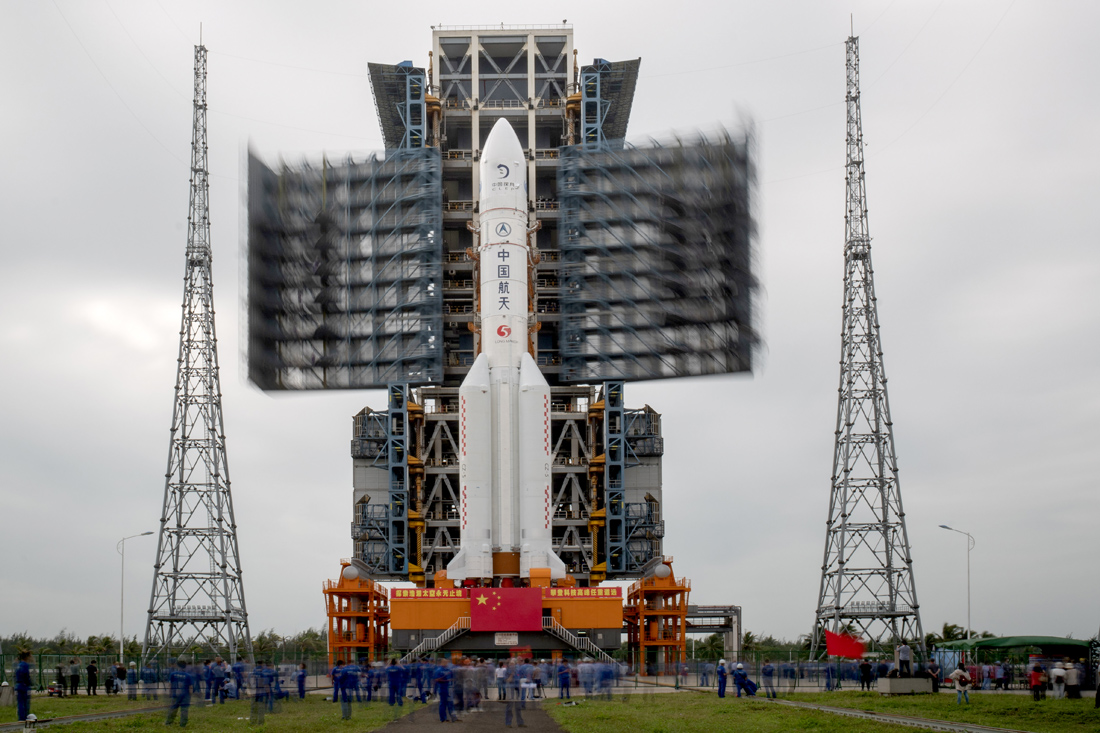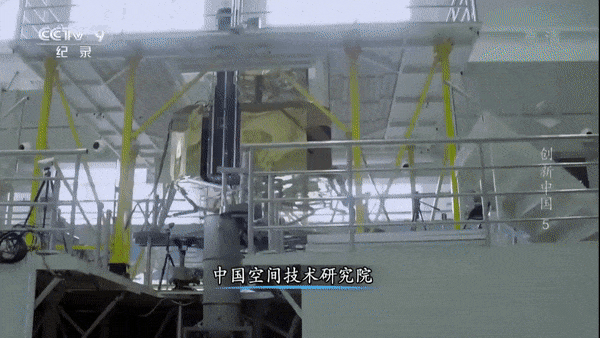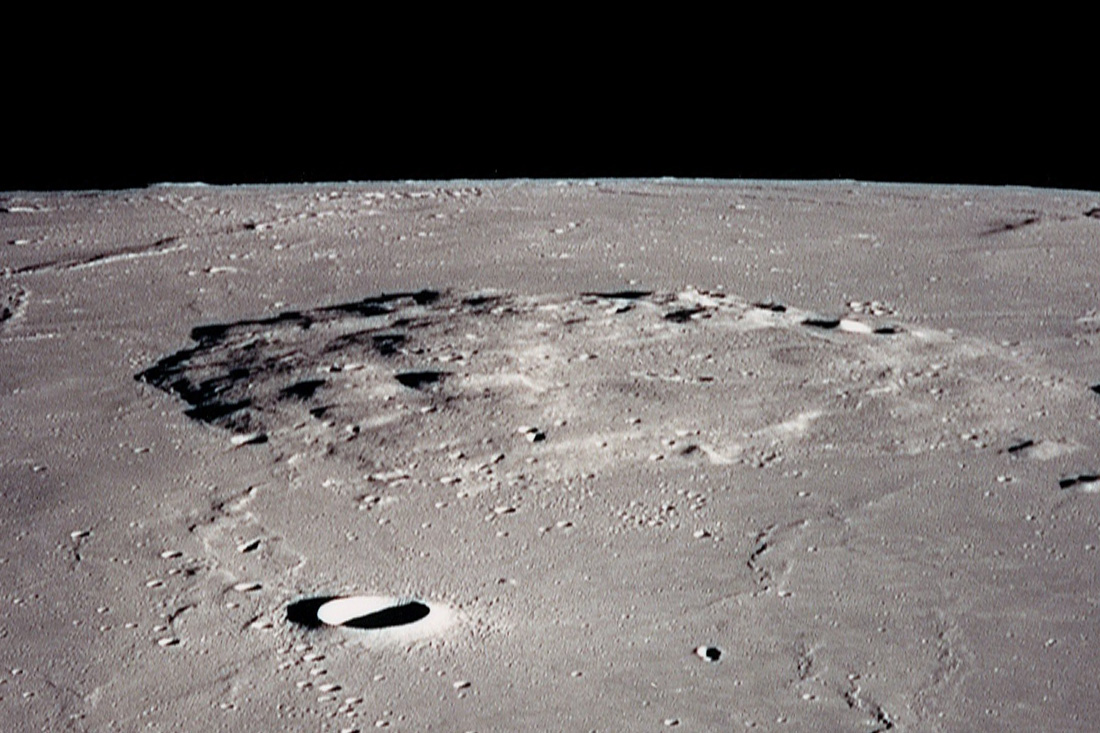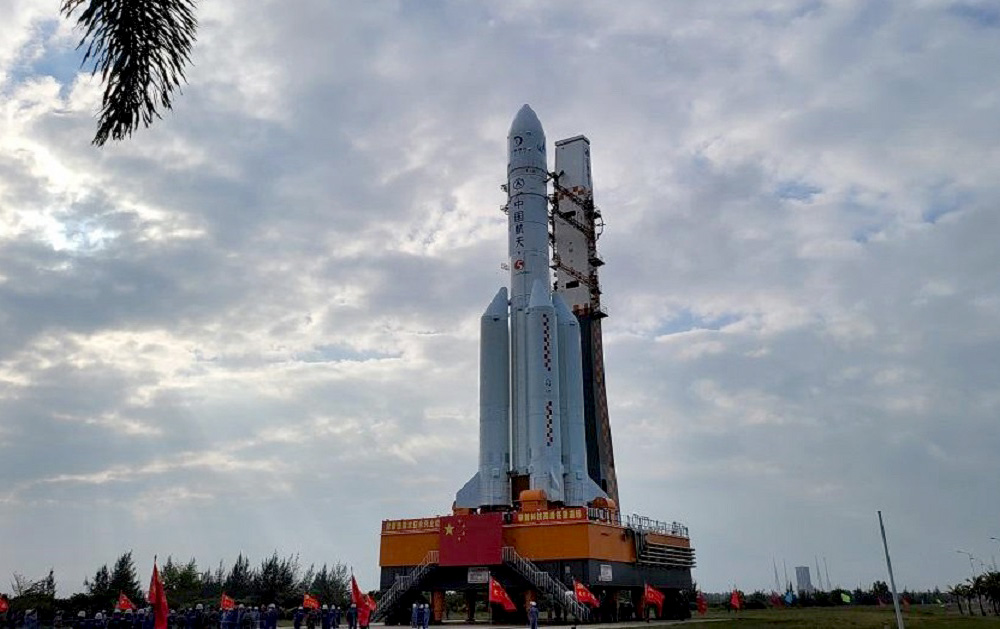
While American and Russian politicians argue over ownership of the moon, China has already begun to appropriate it. Today, the automatic interplanetary station Chang'e 5 starts, which should deliver up to 2 kg of lunar soil to Earth by the end of the year.
The first soil from the Moon, weighing 21.5 kg, was delivered by the Apollo 11 expedition in 1969. Its parts were shared with all countries of that world, and the Soviet Union also got it. Now this gift can be seen by every visitor to the Museum of Cosmonautics in Moscow.

Probably, somewhere a similar sample is stored in China.
A year later, the Soviet apparatus "Luna-16" managed to deliver its prey to the USSR - 101 g of regolith from a depth of up to 30 cm. Grains of this sample can be seen in Moscow (Museum of Cosmonautics and Space Pavilion at VDNKh) and in Kaluga. The bulk of the rock delivered by Soviet stations and donated by the Americans in Russia is stored in the Laboratory of Extraterrestrial Matter of the GEOKHI RAS, and in the USA - in the Lunar Sample Laboratory .
The first Apollo expeditions delivered soil from the surface. Subsequently, hand-held drilling devices were provided for the astronauts to take soil columns from a depth of 70 cm and up to 3 m.

Soviet stations also changed their drilling technique, and Luna-24 was able to lift 170 g from a depth of 2.3 m.
Watch how Luna-24 drilled


Since Luna 24 in 1976, no country has attempted to deliver new rock samples from our natural satellite. They brought it from comets and asteroids, collected the solar wind, but not the moon. China today does not have access to the NASA Lunar Sample Laboratory, although Chinese scientists are still conducting studies of the lunar soil. But China needs the current operation not only to get hold of its lunar rock, but also to demonstrate its leadership in the study of the moon in the 21st century, and to master new technologies for its achievement.
In our century, China has the richest and most successful lunar program, which it has been consistently developing since the late 2000s. Six successful lunar launches (seven if you count the student satellite), two successful landings, two lunar rovers, one relay satellite, and one successful return from lunar orbit.
All these successes have led China to the most complex and most ambitious automatic program not only on the Moon, but in the entire interplanetary astronautics - Chang'e 5. Technically, this launch consists of four spacecraft, not counting the upper stage of the rocket, which will be the whole " matryoshka "to disperse towards the moon.

- The flight module will provide access to a circumlunar orbit, and then the return of the soil to Earth.
- , . Chang'e 3 4.
- , , , .
- , , Shèngzhōu «». .

Chinese astronautics have already mastered orbital flights to the Moon and landing on it. Has successfully tested the return from the Moon. But no one has yet carried out automatic docking in a circumlunar orbit, and China will be the first here.
Similar in complexity, consisting of four elements, the automatic space system was created only once - "Phobos-Grunt" . And China is well acquainted with it - it lost its first Martian vehicle in that launch. But the Russian failure did not stop it. On the contrary, China deliberately chose to complicate things. Initial plans involved the creation of a simpler apparatus similar to the "Luna-16".

But then the engineers of the Celestial Empire swung at the most complex scheme, which almost completely repeats the Apollo flight scheme. Thus, China does not just deliver soil from the moon, it also conducts a rehearsal of its manned flight, which becomes more real with every year and every launch.
It is curious that the design of the Chang'e 5 drilling mechanism is very similar to the Luna-24 drill.

Although, in addition to it, it is also planned to collect samples from the surface with a robotic hand.
If we talk about the scientific goals of Chang'e 5, then China decided not to go the beaten path, but chose a goal away from the previous expeditions of miners.

The first Apollo chose landing sites dictated more by safety than scientific significance, so they landed much more evenly - on the lunar seas. Subsequent ones could already afford the complication of the task and a wide range of choice, but the priority was aimed at the most ancient breeds. Scientists were tasked with determining the age and cause of the moon. The Soviet stations had little choice of landing site due to ballistic restrictions and the lack of a complex control system on the returned missiles.
Chinese scientists have designated the landing site for the volcanic region of the Rumkera Mountains in the northwestern part of the visible side of the moon. It is not the most famous and not the highest mountain on the Moon, but it is a shield volcano up to 70 km across and 1.3 km high.

Unfortunately, we will hardly see what a lunar volcano looks like up close. The priority target of landing was chosen the area on the plain to the north-east.

It is strewn with very young volcanic soil, which formed during the last period of active lunar volcanism less than one and a half billion years ago. The interest of Chinese scientists in samples that neither Russian nor American ones, but not only. More important is to determine the reliability of modern methods of dating the lunar surface.
Now the main means of remote determination of the age of the surface are meteorites. The more meteorite craters - the older the surface, the smaller - the younger.
This is how the age of the landing region of Chang'e 5 was determined. But how much does this coincide with more accurate isotopic dating methods? Intrigue. The extracted rock will also tell about the strength of the Moon's magnetic field at this time, which will give additional information about the lunar core, volcanism and the evolution of this cosmic body in general ... In general, there is a reason to fly.
If Chang'e 5 succeeds, then the sixth station will fly to the circumpolar regions of the Moon, in order to finally get scientists some lunar waterand other frozen volatiles of the ancient lunar atmosphere. Now many space agencies, including Roskosmos, are targeting the moon's poles precisely because of water deposits, but plans to deliver it to Earth are creeping away in the second half of the 1920s. Even if the new US president does not slow down the Artemis program, China has every chance of getting lunar water first.
The launch of the Long March 5 heavy rocket from the Chang'e 5 AMC is expected today at 23:00 Moscow time.

Live Stream:
Mirrors:
youtu.be/Ix55rt97PwU
youtu.be/K40_xSpRREM
If all goes well, the return of the soil can be expected in less than a month - by December 17.